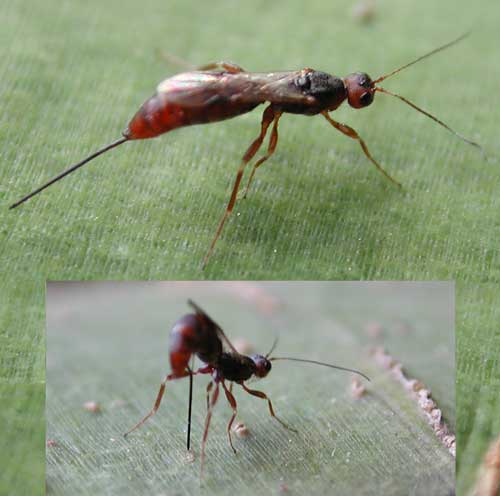Metallic Wood Boring Beetle
Chrysobothris octocola

Image taken in Phoenix, Maricopa Co., Arizona. June 29, 2005. Identification provided by Rick Westcott.
Dying branches of trees like this one from a blue palo verde, Parkinsonia florida, are soon found by adult metallic wood boring beetles, family Buprestidae. Branches may be broken by storms or scorched by fire. Eggs laid beneath the bark hatch into grubs that bore through the branch leaving a flattened, oval-shaped gallery - which lends another common name: Flat-headed Wood Boring Beetle. Several males were actively patrolling the length of this recently fallen branch facing each other in mock battles. Chrysobothris have large eyes providing acute vision and a very wary nature. These beetles are able to fly with great agility, quickly folding and unfolding their wings beneath the elytra (hard wing covers).
Once within a branch the beetle larvae, worm-like grubs, tunnel beneath the outer bark, focusing their attention on the nutritious phloem. This puts them several millimeters or more below the surface. A safe place it would seem, but there are also parasitic wasps that arrive on the scene of dead/dying branches that can drill down through the wood with their ovipositor and lay their own egg into the growing larva. The image below shows an ichneumonid wasp searching and then drilling down. The drill shaft is a very fine structure and is normally protected within a sheath. The shaft can be seen in the lower image.
This beetle belongs to the genus Chrysobothris, which has at least 138 species in North America according to Westcott & Thomas (2015)! These beetles are also known as jewel beetles because of the bright, metallic colors displayed by many of them.
